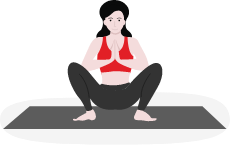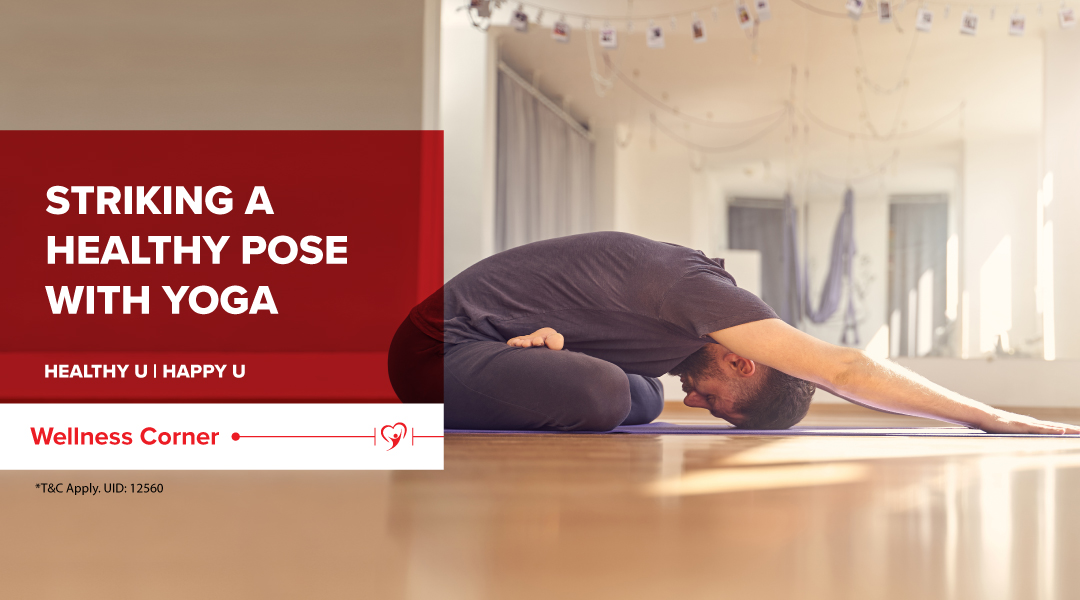

What Is Yoga for Body?
- Overview
- Importance
- Asanas for Body
- Benefits
- Benefits for Men
- Benefits for Women
- Benefits for Kids
- Benefits for Elderly
- Conclusion
- FAQs
Overview
Yoga is not just stretching and flexibility, but it is also a full body workout. Thus, if you are looking for fitness, strength and muscle tone, along with the added benefits of mental and emotional balance, yoga is an excellent solution for you. The different yoga postures are guided by breath and they focus on using core strength (mula bandha) to move energy (prana) through the body.
Importance of Yoga for Body

Over the years, yoga has evolved into many forms, from Tai Chi and Qi Gong to hot yoga and core power yoga. Including Yoga in your daily fitness routine can help improve your overall health and well-being. Some forms of slow yoga breathing involve contracting the glottis muscles in the throat, which improves the heart’s capacity to efficiently regulate blood pressure. It is also suggested that practicing yoga can reduce blood pressure. It also helps in improving respiratory functions of the body.
Yoga Poses for Body
There are several forms and types of yoga available which target at the development of different body parts. Here is a list and brief description of some of the most popular and beneficial poses.
1. Plank Pose

Plank Pose or Phalakasana is one of the foundational poses of yoga which each beginner is encouraged to learn. This is because this pose helps to build abdominal strength and power in your arms and wrists, along with strengthening muscles surrounding the spine. It also helps to improve posture and strengthen your core muscles. In this asana you are parallel to the ground using support of just your palms and toes.
2. Downward-Dog Splits

In a standard downward dog pose, both hips are aligned in the same direction. In case of a split pose, you lift one leg and take it back to the hip level. People with good flexibility are able to arch it further upwards as well. This pose aims to strengthen the arms, thighs and core along with improving waist and hip flexibility. It is also referred to as Eka Pada Adho Mukha Svanasana.
3. Locust Pose

Also known as Salabhasana, this pose improves the back and abdominal strength with focus towards spine and lumbar area. This pose is good for alleviating back pain and it also helps to open your chest and shoulders, thus making a holistic contribution to your physique. In this pose, you must lie on the floor on your belly and gently arch your neck and feet at the same time in the form of a backbend.
4. Camel Pose

Also known as Ustrasana, this asana is another form of backbend posture. Contrary to the locust pose, this asana is done while sitting in an upright position. With your knees on the ground, you need to arch your upper body and touch your heels with your hands. This pose stretches the front of the body including the chest, abdomen, and quadriceps and also improves spinal mobility.
5. Head to Knee Pose

Also known as Janu Sirsasana, this pose involves sitting on the floor with your legs stretched out together. With one leg folded in and perpendicular to the other straight leg, reach skywards with your hands and then bring them down in order to grab your foot with them. This exercise is good to stretch your hamstrings, spine and groin. It helps improve posture overtime and may help with digestion as well.
6. Garland Pose

The Garland Pose, also known as Malasana, is yoga's deep squat. It opens your hips and groin in counterbalance to the tightness you can develop from sitting too much. In this pose, you need to squat on the floor with your feet as close together as possible. Then the thighs need to be separated slightly and you are expected to lean your torso in between. Another great benefit of this pose is that is helps to trim belly fat.
Benefits of Yoga for Body
Although yoga may seem like a relatively mild form of exercise, practicing yoga regularly can result in the same health benefits as many other types of exercise. Also, yoga has less impact on joints and gives more relaxation as compared to other forms of exercises.
- Increasing balance
- Improving baroreflex sensitivity
- Reducing fatigue
- Enhancing flexibility
- Healthy heart rate
- Healthy heart rate variability
- Improved kidney function
- Lessened or buffered menopausal symptoms
- Relieving pain
- Relieving or inhibiting psychotic symptoms
- Improving quality of life
- Reducing sleep disturbances
- Improving social and occupational functioning
- Increasing strength
- Lowering obesity
- Reducing stress
- Reducing cholesterol
The Benefits of Yoga for Men
Below listed are few benefits that men often specifically appreciate about practicing yoga.
- Enhances their athletic performance
- Prevents injury and speeds up recovery process
- Boosts sex life
- Improves muscle tone
The Benefits of Yoga for Women
The benefits of yoga that are often specifically appreciated by women include:
- Improves posture
- Improves posture and appearance
- Helps with effective weight management
The Benefits of Yoga for Kids
Regularly practicing yoga can have a positive impact in a child’s life. This includes:
- Improves well-being & emotional balance
- Improves their academic performance
- Improves average heart rate
The Benefits of Yoga for Elderly
Older adults who engaged in regular yoga practice enjoyed several health benefits, including:
- Lowered blood pressure
- Reduced respiration rate
- Strengthened cardiopulmonary fitness
- Enhanced body flexibility
- Improved muscle strength and endurance
- Improved balance
- Increased joints motion
Conclusion
Yoga promotes physical health in multiple different ways. Some of them derive from better stress management. Others come more directly from the physical movements and postures in yoga, which help promote flexibility and reduce joint pain.
Frequently Asked Questions
1. Can yoga cure all diseases?
Yoga is a practice of bringing balance between the mind and body and helping improve overall well being. It is known to help in the treatment of several diseases and ailments and may help with migraines, osteoporosis, balance and mobility issues, multiple sclerosis, inflammatory bowel disease, fibromyalgia, and ADHD. However, it should not be considered as a substitute to medicine for existing conditions.
2. Are there any side-effects of doing yoga?
Yoga is not known to have any side effects, since it is the most natural form of exercising. However, it is advisable to get accustomed to your routine under the guidance of experts, at least in the beginning phase. People with aggravated physical conditions or injuries should pay special attention to the kind of poses they indulge in.
3. What kind of equipment is required to practice yoga?
The beauty of yoga lies in its natural simplicity. You require almost negligible gear and equipment to practice it. A non-slip yoga mat is recommended for a better floor grip.
4. Are there more asanas/poses in yoga other than the ones described here?
Yoga is a vast practice. In fact, many consider it as a way of life. With several forms, disciplines and poses, mastering the practice of yoga can take years. It is prudent to start with the poses most suitable to your physical condition and inclination.
5. Are there any guidelines before beginning to practice yoga?
To make the most out of your session, it is recommended to wear light and comfortable clothes, remove all jewelry and accessories, do some warm-up and stretching to make your body flexible and choose a quiet and peaceful environment to be able to focus on your breathing.
Source: Health.Harvard, HopkinsMedicine, VeryWellMind, Positive Psychology
Get a right Health Insurance today & protect your savings from unexpected medical expenses.
Different kinds of yoga asanas have different goals and help to nourish and nurture different organs or systems in the body. However, the importance of health insurance shouldn’t be ignored even if yoga is a way of your life, as a safety net in times of medical emergencies or planned hospitalisations.
Disclaimer: This blog provides general information and discussions about health and related subjects. The information and other content provided in this blog, website or in any linked materials are not intended and should not be considered, or used as a substitute for, medical advice, diagnosis or treatment. Kindly contact your Doctor before starting a new medicine or health regime.

/healthy-diet_s.png?sfvrsn=92ddfb17_2)
/nutrient-rich-s.png?sfvrsn=ef2581d1_2)
/home-workout-s.png?sfvrsn=6b234795_2)
/yoga-for-mind-s.png?sfvrsn=f8c16989_2)
/yoga-for-body-s.png?sfvrsn=9a6b516b_2)












 Health Insurance
Health Insurance  Travel Insurance
Travel Insurance  Car Insurance
Car Insurance  Cyber Insurance
Cyber Insurance  Critical Illness Insurance
Critical Illness Insurance
 Pet Insurance
Pet Insurance
 Bike/Two Wheeler Insurance
Bike/Two Wheeler Insurance  Home Insurance
Home Insurance  Third Party Vehicle Ins.
Third Party Vehicle Ins.  Tractor Insurance
Tractor Insurance  Goods Carrying Vehicle Ins.
Goods Carrying Vehicle Ins.  Passenger Carrying Vehicle Ins.
Passenger Carrying Vehicle Ins.  Compulsory Personal Accident Insurance
Compulsory Personal Accident Insurance  Travel Insurance
Travel Insurance  Rural
Rural 










